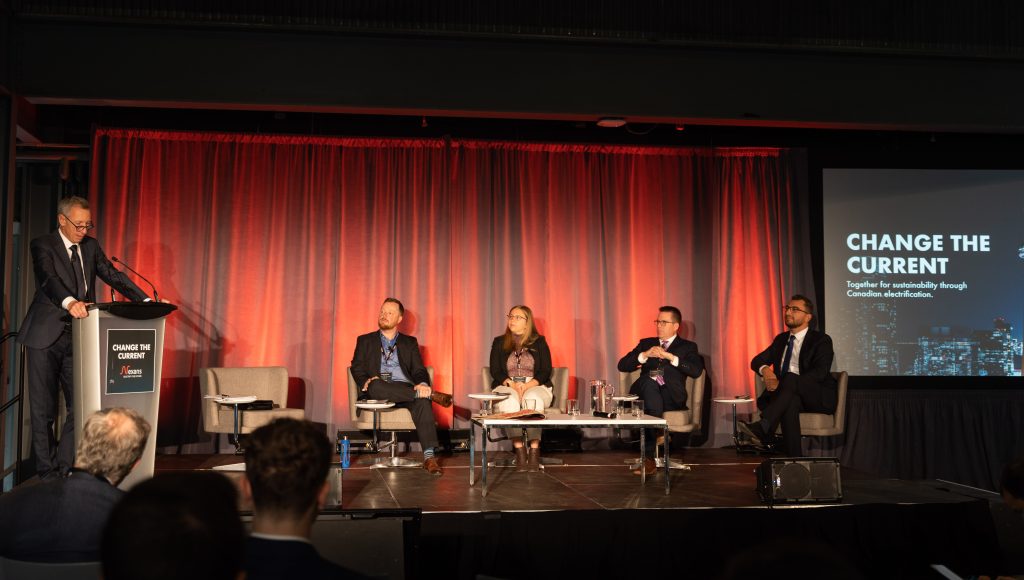
Electrification of the planet, copper set to lead the way
Monica Ferguson
Cleantech Canada Energy Canada Canadian copper circular economy Climate change electric vehicle electrical grids electrification Net-zero Nexans Canada overcoming barriers Raw material scarcity recycling copper renewable electrical energy
Photo: Nexans Canada.
Nexans Canada gathered industry leaders and climate change experts at Evergreen Brickworks in Toronto, Ont., to discuss renewable electrical energy in Canada at Change the Current: Together for Sustainability through Canadian Electrification.
A key takeaway was that to meet Canada’s 2030 and 2050 net-zero goals, the economy will need to be powered by two energy sources: clean power and clean fuels.
“The switch from fossil fuel energy to clean electricity involves producing more clean energy in every region, phasing out emitting sources and using clean electricity to power more and more of the economy,” said Chris Turner, industry expert and author. “The big switch is the foundation of Canada’s climate progress, and it will power Canada’s future prosperity. Making the big switch requires governments to use policy tools to enable the transition.”
Canada has under eight years to reach its emission reduction targets, in this transition, two major challenges are presented. The first is to speed up the shift from fossil fuel to renewable energy and second are electrical grids – which were mentioned as the backbone of a country’s economy; however, most are outdated and can lead to massive power outages in big cities.
Raw material scarcity and the circular economy were discussed at the event, with copper being a major point of interest. Today, Canada is balanced between supply and demand for copper; however, with the switch to electrification, the demand is set to increase.
Plants and appliances that use fossil energy today will need to be electrified, this includes cars, offices, and airplanes, which will undoubtedly increase worldwide demand for copper. For example, an electric vehicle requires approximately two to three times more copper than a gas-powered vehicle.
Why are we not recycling more copper today?
“Today we are recycling 10 per cent of copper, we could recycle 20 per cent easily, though we have the issue of available copper scrap and cables scrap,” said Olivier Chevreau, vice-president of sustainability, Nexans.
This is because as a society we are not used to collecting and recycling cable scraps. The process of getting material back, processing it effectively and then distributing the material where it needs to be is not in place yet. “Structure and regulation are the two pillars in increasing copper recycling,” said Chevreau.
To combat the increase in demand, an industry-wide commitment to retrieving recycling copper cabling is required. This can be facilitated by designing plants and equipment with end of life in mind so the metal can be recovered, recycled, and reused, creating a circular economy.
Canadian copper can help address the global copper shortage and get Canada into the net-zero grid race, if industry’s commitment to retrieving copper is strengthened.
“When we talk about a net-zero approach to climate change, what we’re really talking about is a great global economic and social transition, while grasping unprecedented economic opportunity,” said Dr. Bruce Lourie, author.
Speakers at the event included:
- Chris Turner, author
• Jerome Leroy, Nexans
• Oliver Chevreau, Nexans
• Dr. Bruce Lourie, author
• Dr. José Etcheverry, York University
• Duncan MacLellan, City of Toronto
• Erin Andrews, SCV Consulting
• Matthew McClearn, The Globe and Mail
To watch the full Nexans Canada event, click here:
https://www.nexans.ca/en/About-Us/Planet/Change-the-Current-Sustainability-Event.html
